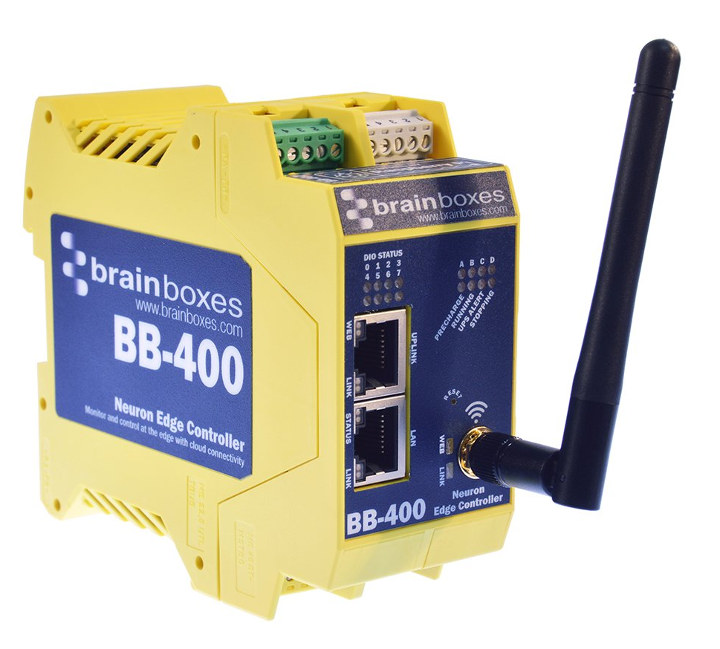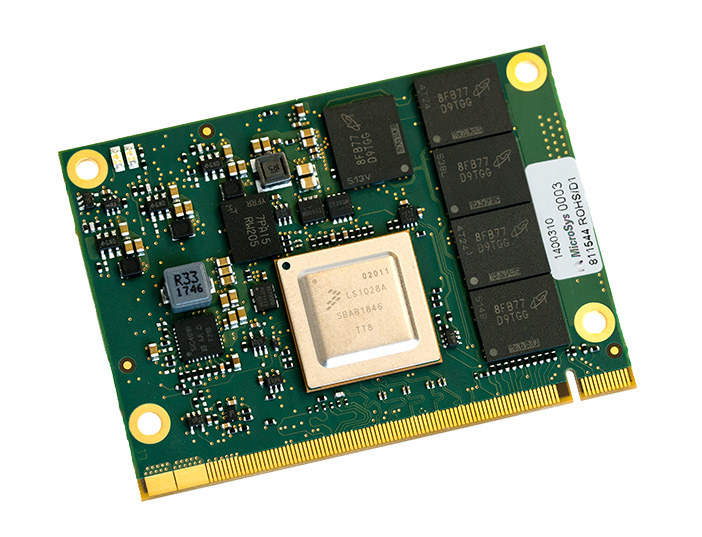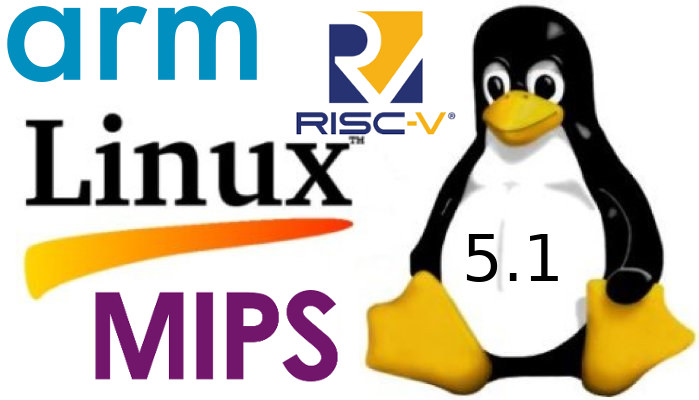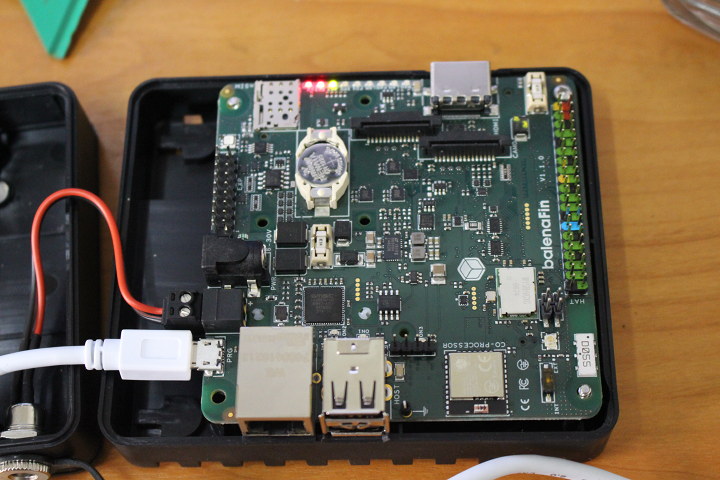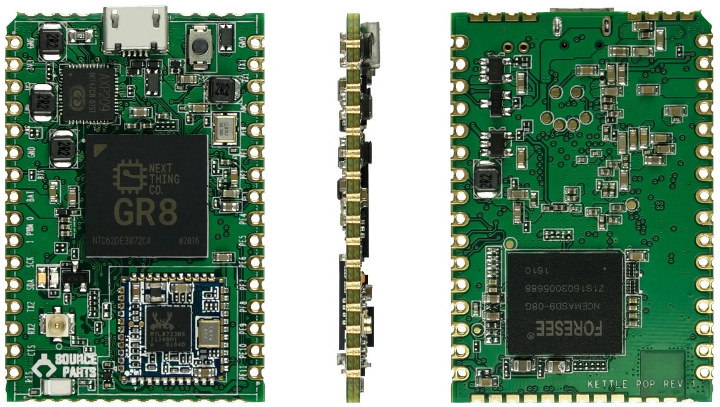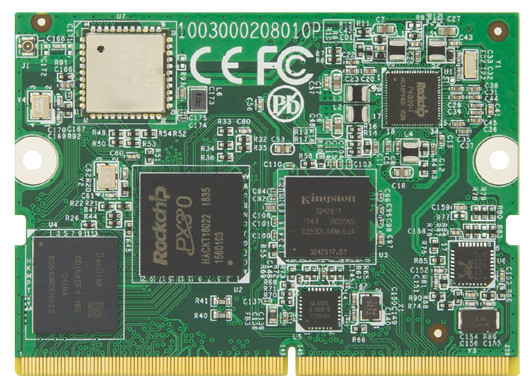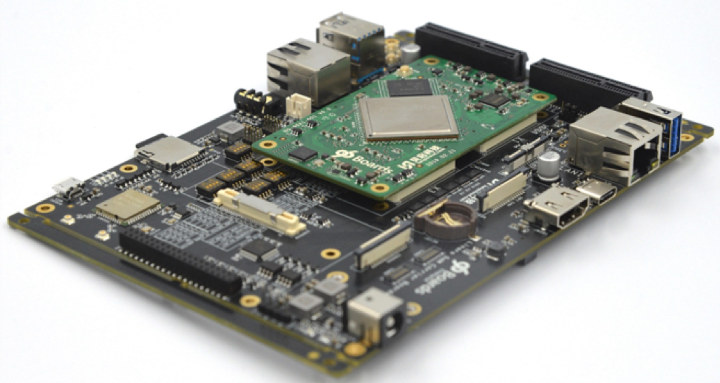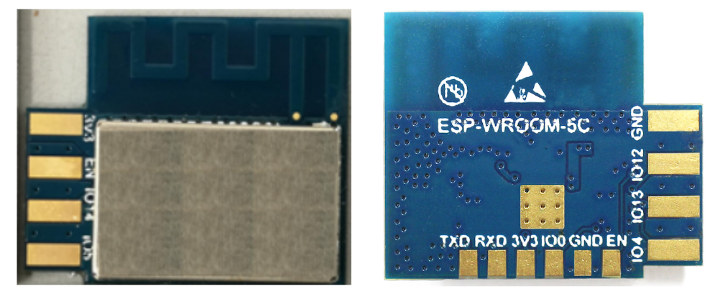While the Raspberry Pi boards are mostly promoted as tools to teach STEM to kids and adults alike, they have found their way in a fair amount of industrial products, including ModBerry M500 industrial computer, Janz Tec emPC-A/RPI3 industrial embedded controller, and Kunbus RevolutionPi RevPi Core among others. There’s yet another option with Brainboxes BB-400 Neuron Edge industrial controller that was announced last year with Raspberry Pi Compute Module 3, but recently got an upgrade to Raspberry Pi Compute Module 3+. The controller features two Ethernet ports and also includes an Arduino compatible microcontroller to control the system’s eight configurable digital inputs and outputs. BB-400 Neuron Edge industrial controller specifications: SoM – Raspberry Pi Compute Module 3+ with Broadcom BCM2837B0 quad-core , Cortex-A53 processor @ 1.2GHz, 1 GB LPDDR2, 32GB eMMC Flash storage MCU – Unnamed Microchip Atmel Arduino compatible microcontroller Connectivity Ethernet Uplink Port – 1x RJ45 jack, 10/100Mbps […]
miriac MPX-LS1028A NXP QorIQ LS1028A SoM Targets TSN Applications with HMI Display
NXP QorIQ LayerScape LS1028A communication SoC was first unveiled in March 2017 with two Armv8 cores, GPU and LCD controller for HMI systems, as well as Time-Sensitive Networking (TSN) capabilities useful in industrial settings. As usual it takes a while before the company finalize their design and software support, but LS1028A has started to appear at least in one hardware platform that’s supposed to launch this quarter (Q2 2019): MicroSys miriac MPX-LS1028A system-on-module. miriac MPX-LS1028A SoM specifications: SoC – NXP QorIQ LS1018 / LS1028 single / dual core Arm Cortex-A72 clocked at up to 1.3 GHz with MXC Vivante GPU, Mali Display Processor, configurable cryptographic offload engines (Optional: LS1017/LS1027 without GPU for cost saving) System Memory – Up to 4GB 32 Bit DDR4 with ECC RAM at up to 1600 MT/s Storage – Up to 256MB Serial NOR Flash & up to 4GB Serial NAND Flash; EEPROM MXM 2.0 edge […]
Linux 5.1 Release – Main Changes, Arm, MIPS & RISC-V Architectures
Linus Torvalds has just announced the release of Linux 5.1: So it’s a bit later in the day than I usually do this, just because I was waffling about the release. Partly because I got some small pull requests today, but mostly just because I wasn’t looking forward to the timing of this upcoming 5.2 merge window. But the last-minute pull requests really weren’t big enough to justify delaying things over, and hopefully the merge window timing won’t be all that painful either. I just happen to have the college graduation of my oldest happen right smack dab in the middle of the upcoming merge window, so I might be effectively offline for a few days there. If worst comes to worst, I’ll extend it to make it all work, but I don’t think it will be needed. Anyway, on to 5.1 itself. The past week has been pretty calm, […]
Getting Started with balenaFin Developer Kit, balenaOS and balenaCloud
balena Fin is a carrier board for Raspberry Pi Compute Module 3/3+ designed specifically for industrial applications leveraging fleet management services provided by Balena. I received balenaFin developer kit last month, and in the first part of the reviewed shows how to assemble the kit. I’m now had time to spend more time with the kit, as well as BalenaOS Linux based operating system optimized for running Docker containers on embedded devices, and balenaCloud services to manage a fleet of devices from a web dashboard. I’ve mostly followed the instructions in the getting started guides here and there, and will document what I had to do to prepare the image, flash it to the board, and load a sample docker application locally, and through balenaCloud. Downloading and Configuring BalenaOS for balena Fin You’ll find BalenaOS in the download page. While we are using hardware based on a Raspberry Pi Compute […]
Kettlepop is a Limited Edition of a CHIP Pro Derivative with 8GB eMMC flash
Next Things Co. CHIP was a $9 Arm Linux board based on Allwinner R8 processor that become fairly popular due to its low price, built-in WiFi & Bluetooth connectivity, open source hardware design, and integration into fun kits such as PocketCHIP portable gaming console/ Linux handheld computer. Later the company expanded their product line with CHIP Pro featuring Allwinner GR8 system-in-package, and designed as a low profile system-on-module to make it more suitable for integration into commercial products. Sadly, the company eventually ran into financial problems, and had to fold later in 2018. However, later that year, a company called Source Parts announced they were working on Popcorn Computer, a derivative of C.H.I.P. board, and appears to have sold it through Amazon US for a time. But this morning, I was informed that a board called Kettlepop was added to HackerBoards database with Next Things Co. GR8 SiP, and also […]
ARBOR Introduces SOM-RP301 Rockchip PX30 SoM for Retail Kiosks
Rockchip PX30 is a quad core Cortex-A35 processor with a dual VOP (Video Output Processor) in order to drive two independent displays, that has low power consumption, low thermal requirements, and that we previously found in some car infotainment systems. But the processor is also suitable for other applications, and ARBOR Technology recently launched SOM-RP301 system-on-module based on the PX30 processor, and specifically designed for fanless retail kiosks such as electronic restaurant menus, automated currency exchange machines, ticketing kiosks and more. SOM-RP301 system-on-module specifications: SoC – Rockchip PX30 quad core Cortex-A35 processor @ 1.5 GHz with Arm Mali-G31 MP2 GPU System Memory – 1GB LPDDR3 (Up to 4GB as option) Storage – 16 GB eMMC flash Connectivity – Fast Ethernet transceiver, 802.11 b/g/n/ac WiFi 5 + Bluetooth 4.0 module Edge Connector – SO-DIMM connector with Display – LVDS or MIPI DSI Camera – MIPI CSI RX interface with 8MP ISP […]
TB-96AI & TB-96AIoT are the First 96Boards Systems-on-Module
First introduced in 2015, 96boards specifications define mechanical, electrical, and software specifications for single board computers, but in 2017 Linaro asked companies to provide some feedback on what they’d like for a 96boards system-on-module standard. And for the first day of Linaro Connect Bangkok 2019, the 96Boards SoM specifications have now been announced, together with the introduction of Rockchip RK3399Pro powered TB-96AI and Rockchip RK1808 based TB-96AIoT, the first compliant 96Boards SoMs, and corresponding 96Boards SoM Carrier Board. 96Boards System-on-Module Specifications Two 96Boards SoM specifications have been unveiled with the Compute Module Specification and the Wireless Specification. The 96boards Compute Module Specification defines a SoM with up to four 100-pin connectors, but only one is mandatory (X1), and two form factors are specified: SOM-CA (85 x 50 mm) and SOM-CB (50 x 50 mm). List of signals associated to each connectors: X1 – SoM managements, 1x UART, 2x I2C, 1x […]
ESP-WROOM-5C is a Side-Mounted ESP8285 WiFi Module
You’d think by now we’d have enough ESP8266 or ESP8285 WiFi modules, but based on an FCC listing, we now know that Espressif Systems has been working on another ESP8285 WiFi module – ESP-WROOM-5C – designed to be side-mounted. ESP-WROOM-5C specifications: SoC – Espressif Systems ESP8285 Wi-Fi 802.11 b/g/n WiFi 4 @ 2412 MHz ~2462 MHz; Station/SoftAP/SoftAP + Station modes WPA/WPA2 security with EP/TKIP/AES encryption PCB antenna Peripheral interface I2C/IR Remote Control GPIO/PWM Operating voltage – 2.7V ~ 3.6V Operating current – Average: 80 mA Minimum current delivered by power supply – 500 mA Dimensions – 19 x 16 x 3.2 mm Temperature Range – -40°C ~ 105°C Reliability Tests – HTOL/HTSL/uHAST/TCT/ESD The module supports firmware upgrade over UART or OTA (Over-The-Air). Software development can be done with the IDF SDK for custom firmware, but “Cloud Server development” is also possible, and an Android/iOS app can be provided for user […]


